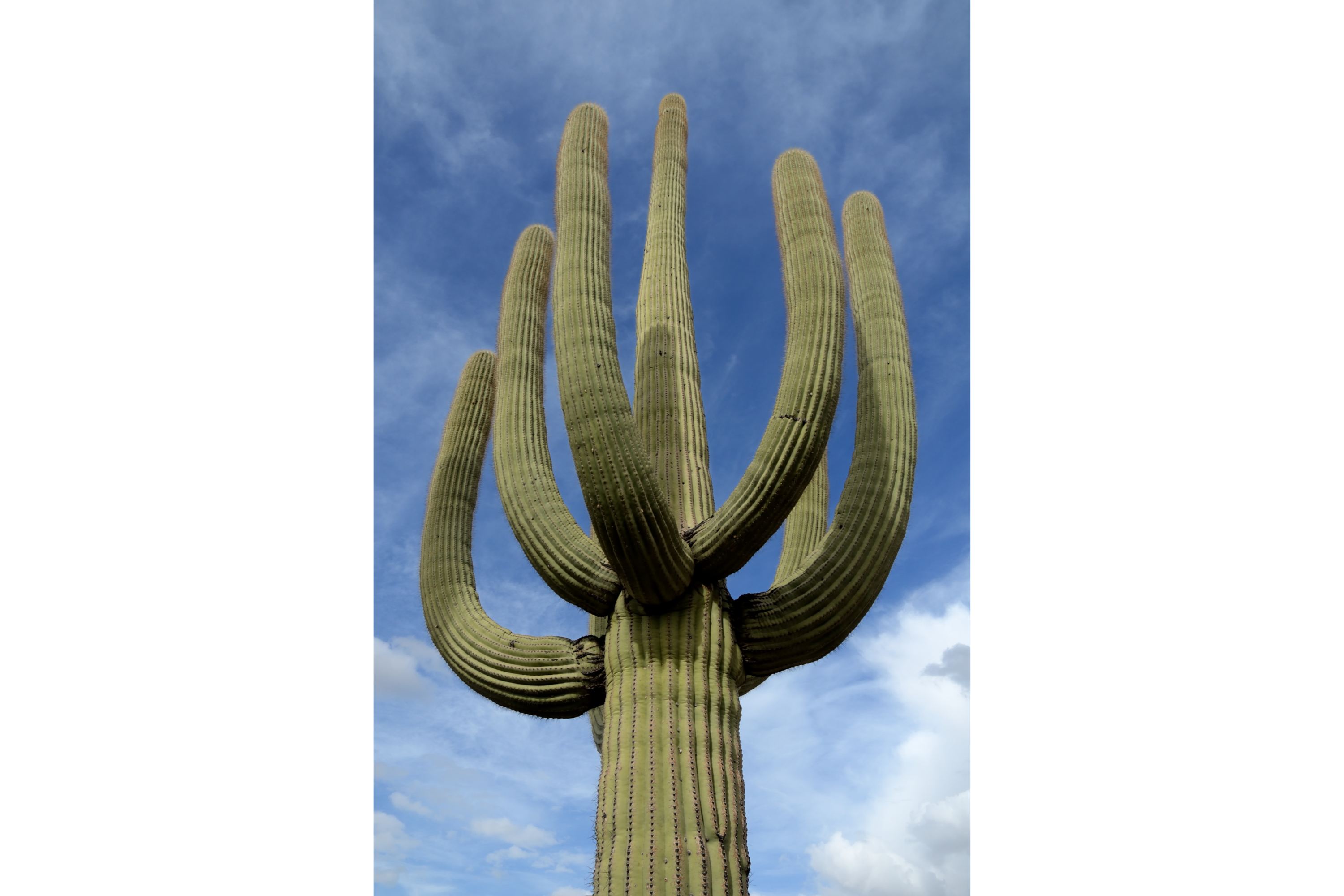Saguaro
(Carnegiea gigantea)

Description
The saguaro (Synonym; Carnegiea gigantea) is a tree-like cactus species in the monotypic genus Carnegiea that can grow to be over 12 meters (40 feet) tall. It is native to the Sonoran Desert in Arizona, the Mexican state of Sonora, and the Whipple Mountains and Imperial County areas of California. The saguaro blossom is the state wildflower of Arizona. Its scientific name is given in honor of Andrew Carnegie. In 1994, Saguaro National Park, near Tucson, Arizona, was designated to help protect this species and its habitat. Some saguaros are cristate or "crested" due to fasciation. A house sparrow nesting on a saguaro cactus. Saguaros have a relatively long lifespan, often exceeding 150 years. They may grow their first side arm around 75–100 years of age, but some never grow any arms. Arms are developed to increase the plant's reproductive capacity, as more apices lead to more flowers and fruit. A saguaro can absorb and store considerable amounts of rainwater, visibly expanding in the process, while slowly using the stored water as needed. This characteristic enables the saguaro to survive during periods of drought. It is a keystone species, and provides food and habitat to a large number of species. Saguaros have been a source of food and shelter for humans for thousands of years. Their sweet red fleshed fruits are turned into syrup by native peoples, such as the Tohono Oʼodham and Pima. Their ribs are used as building materials in the wood-poor deserts. The saguaro cactus is a common image in Mexican culture and American Southwest films.
Taxonomic tree:







